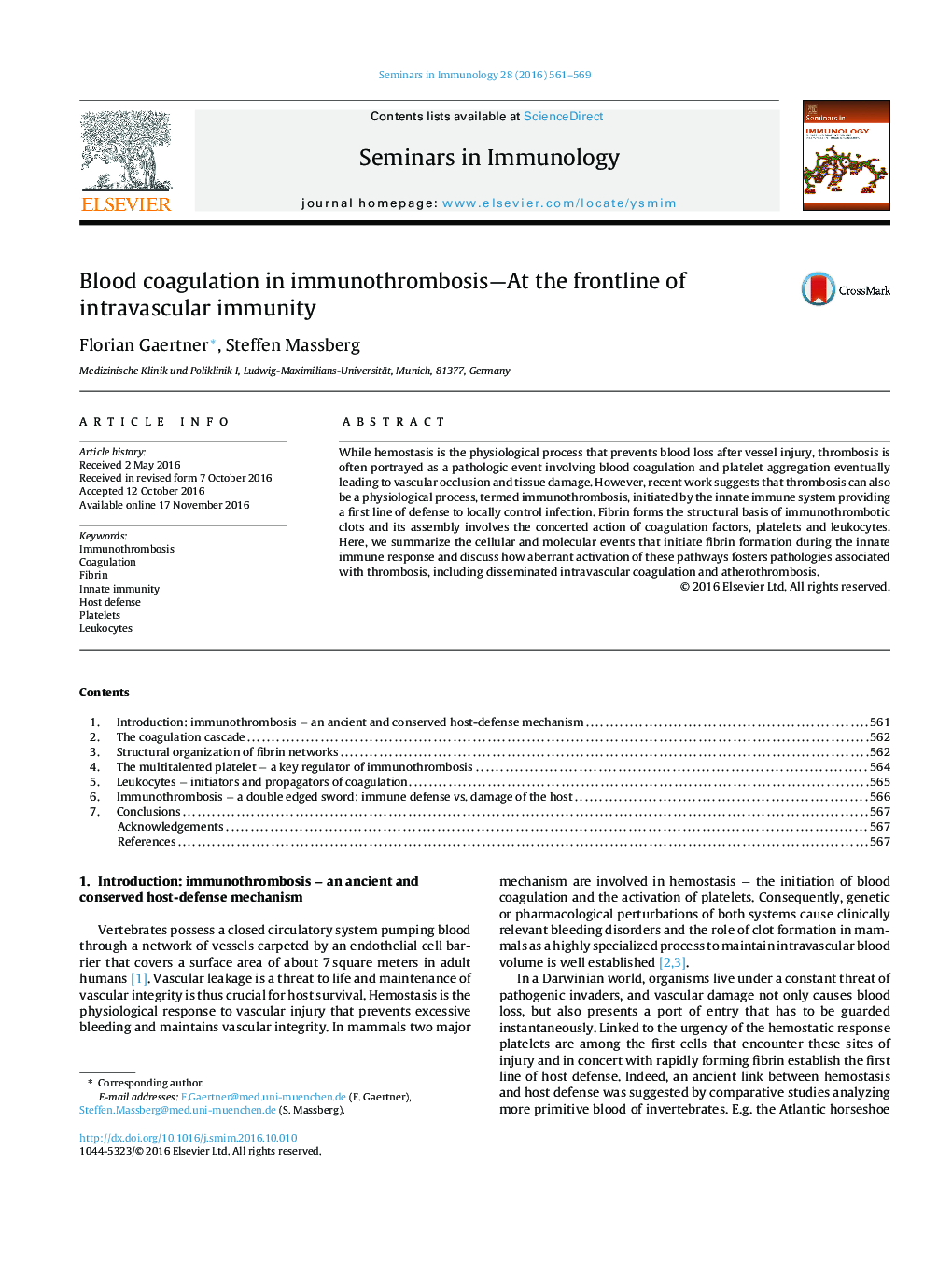| کد مقاله | کد نشریه | سال انتشار | مقاله انگلیسی | نسخه تمام متن |
|---|---|---|---|---|
| 5670416 | 1408010 | 2016 | 9 صفحه PDF | دانلود رایگان |
- Immunothrombosis is a physiological effector of the innate immune response.
- Fibrin formation provides a scaffold for intravascular immunity.
- Immunothrombosis is a multicellular process involving platelets and leukocytes.
- Aberrant immunothrombosis underlies pathologies associated with thrombosis.
While hemostasis is the physiological process that prevents blood loss after vessel injury, thrombosis is often portrayed as a pathologic event involving blood coagulation and platelet aggregation eventually leading to vascular occlusion and tissue damage. However, recent work suggests that thrombosis can also be a physiological process, termed immunothrombosis, initiated by the innate immune system providing a first line of defense to locally control infection. Fibrin forms the structural basis of immunothrombotic clots and its assembly involves the concerted action of coagulation factors, platelets and leukocytes. Here, we summarize the cellular and molecular events that initiate fibrin formation during the innate immune response and discuss how aberrant activation of these pathways fosters pathologies associated with thrombosis, including disseminated intravascular coagulation and atherothrombosis.
Journal: Seminars in Immunology - Volume 28, Issue 6, December 2016, Pages 561-569
